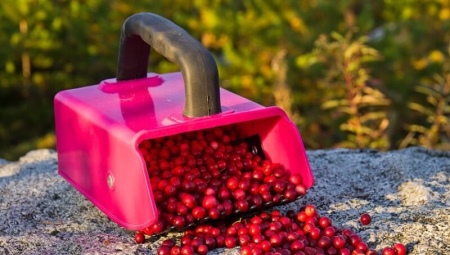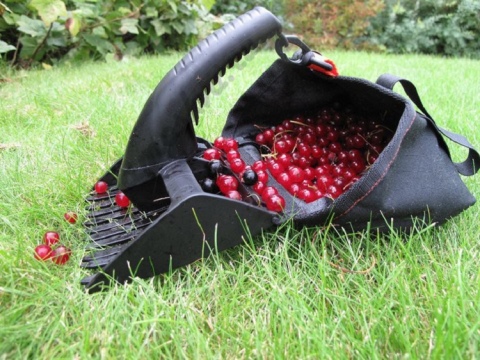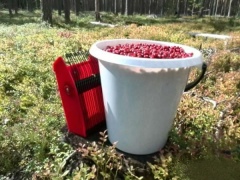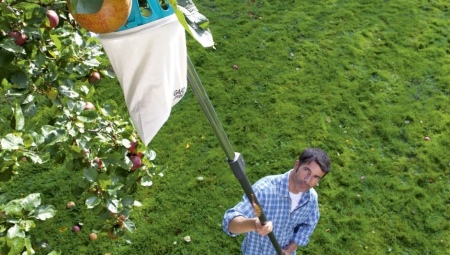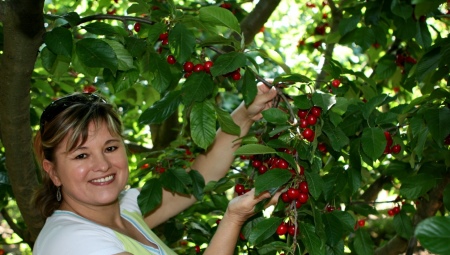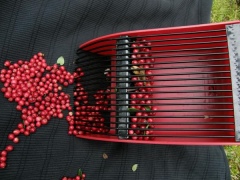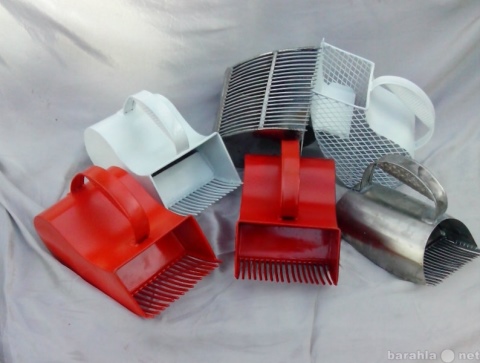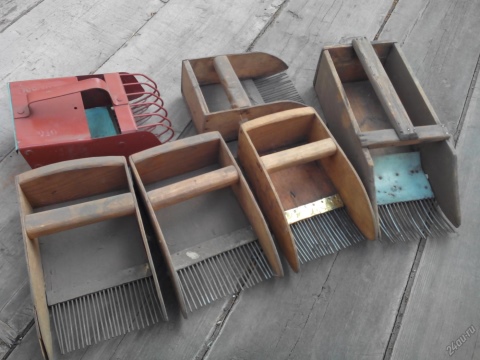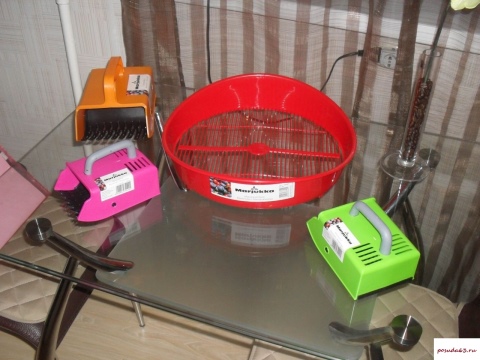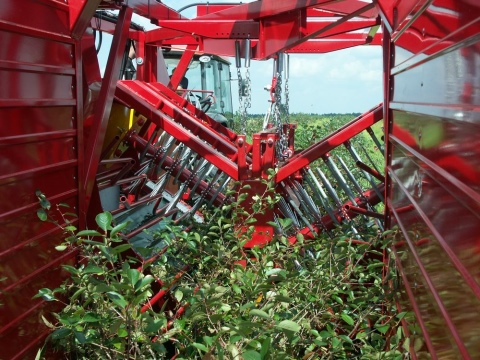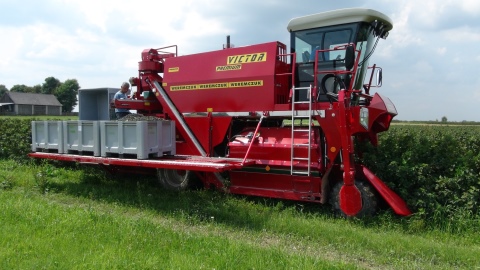Manufacturing instruction
From the funds found at home, home-made devices for collecting forest gifts are made without blueprints. The dimensions and shape of the fixtures determine the dimensions of the plastic products (bottles, containers) from which the bucket is made.
More complex products from materials such as metal, wood, plywood are made strictly according to the scheme. First, the patterns of all the details of the device are drawn on paper or cardboard, then they are transferred to metal, plywood sheets.
From sheet metal
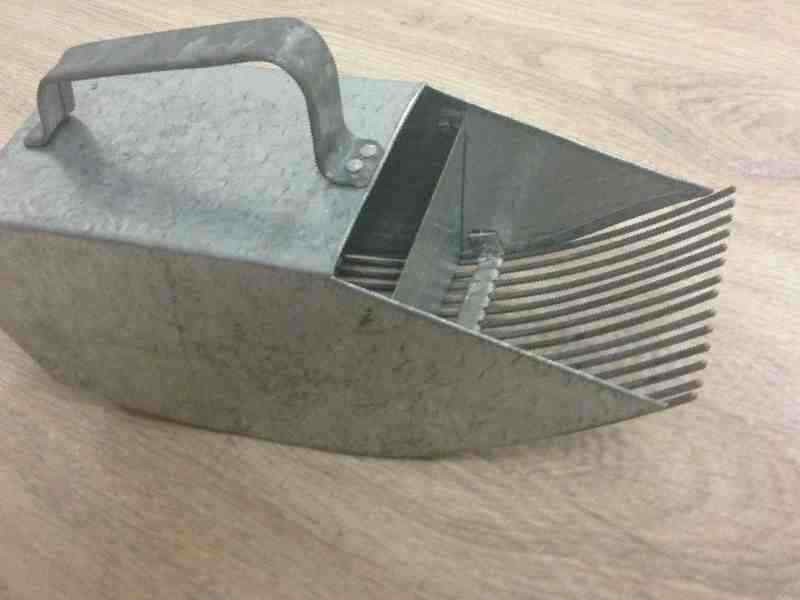
A step-by-step description of the process of making a do-it-yourself blueberry harvester will help in the work:
- take a galvanized sheet, apply the contours of the bucket body parts on it using a template;
- cut all elements of the future structure with metal scissors;
- cut the rods from wire (1-3 mm), at the comb of the scoop they will be the bottom and teeth;
- connect the body parts with rivets;
- inside, attach a curtain to the hinges, it will not allow the fruits to spill out during collection;
- make a handle from a piece of pipe, flatten the ends and rivet to 2 bent strips;
- rivet the holder with the handle to the body.
For berries, sew a bag from a coarse fabric, attach it with a thin wire or rope to the bucket body. Bend the teeth-knitting needles of the comb upward. How to fix the comb knitting needles is worth considering in detail.
Note! To make the hand comfortable, the steel handle is wrapped in several layers of electrical tape.
First, cut 2 strips 3 cm wide from the galvanized sheet, equal to the width of the comb. Bend each strip in half and cut 2 cm on each side of one half. On the fold, mark the places for the holes with a step of no more than 5 mm.
Make notches exactly according to the marking with an emery wheel. Insert a wire into the holes of the first and second plates and solder so that they do not fall out. With a chisel and a hammer, shorten the knitting needles to one length, bend them.
Made of wood

Make the berry picker out of 9 mm thick plywood. Make the comb from old bicycle spokes or 3 mm wire. Put the templates of the body parts on the sheet, outline the contours. Using an electric jigsaw or a hacksaw, cut out the workpieces strictly along the drawn lines.
To make a comb, take a rail 18 * 18 mm, cut off 2 bars. On each along the center line, mark the places for the holes with a pencil and drill. Maintain a distance of 5 mm between adjacent holes. Make the teeth of the comb out of wire:
- cut into equal lengths;
- bend each rod in half so that the edges of the teeth are rounded, do not injure the stems when collecting;
- insert wire blanks into the holes of both bars.
Bend the teeth of the comb at the desired angle. Assemble the bucket parts according to the diagram. Attach the door handle to the upper wall of the cabinet.
From a plastic bottle

A plastic bottle scoop can be made in the forest if you have a knife, string and marker with you. The volume of the container does not matter - the more, the better. The workpiece must be laid on the ground on the side that looks up, draw the outline of the hole. It should follow the silhouette of the English letter "W". Cut a hole with a knife.
Make a stick of the desired length from a thick branch. Attach it to the neck of the bottle, fix it with a rope or several layers of electrical tape. The instructions for using such a comb are simple:
- holding a stick, pull the device through the bushes;
- sharp edges will cut off the fruits, they will fall into the container;
- pour the berries into a bucket through the neck, having previously unscrewed the lid.
It is better to make the hole closer to the bottom, the plastic is denser in that place, the edges of the teeth will be harder.
From the canister
For the manufacture of the body, take a canister with a volume of 1-2.5 liters. Make the part without a handle at the bottom. Cut out teeth and transverse slots in it to screen out debris. For convenience, draw all lines on the canister with a marker.
Cut holes with a construction knife. Maintain the standard spacing between the needles - 5 mm. When picking fruits, hold the scoop by the handle. To save time on pouring the berries into the body (bucket), attach a bag or cloth bag with electrical tape to the opening of the canister.
How can you pick blueberries
The process of picking berries itself, if it is carried out without a blueberry collector, takes a lot of time and effort. To improve it, assemblers come up with various devices, devices to speed up the process.
To obtain the most positive result, it is necessary to observe the following recommendations regarding the harvesting of small berries:
- Work should begin in July, when the blueberries are fully ripe and have reached technical ripeness. By this time, you need to prepare containers and berry collectors for blueberries.
- The life span of the bushes is about 20 years. It is more efficient to pick berries from plants that are no more than 15 years old. In such fruits, the percentage of nutrients is quite high.
- Only ripe fruits, the color of which is blue-black, should be removed. If you pick unripe berries, then you should not expect them to ripen. And overripe specimens will disappear very quickly.
- The best time to harvest blueberries has been observed to be at full moon. Such berries are distinguished by high taste, but they should be consumed quickly, they will not lie for a long time. In order to collect the fruits for long-term storage, work should be planned in advance for the full moon.
- The optimal time for harvesting blueberries is in the morning and evening. The weather on the day of harvest should be dry and cool.
- It is best to use wicker baskets with ventilation holes as containers. Alternatively, you can use plastic containers, boxes.
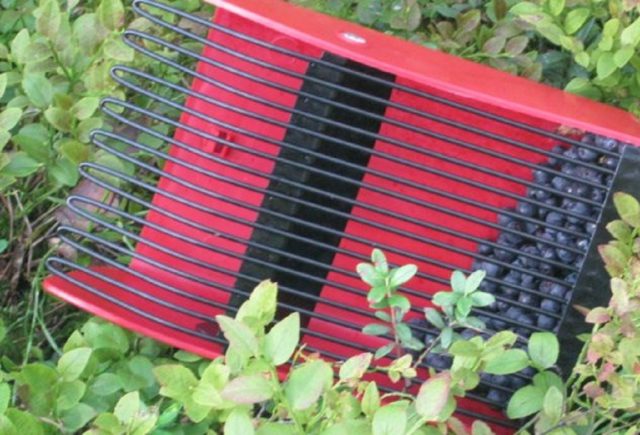
Harvesting blueberries is faster and easier with special tools
Advice! You can determine the approximate age of a plant by branches. An adult bush has a large number of lateral processes.
Among avid forest lovers, there is an opinion that devices for collecting blueberries severely damage fruit twigs. With this approach, the productivity indicators of plants are markedly reduced.
Similar designs: rakes, shovels, shovels, combs and others
The principle of "combing" berries from herbaceous bushes is implemented in some devices, either simpler in design, or designed to further simplify the work of the picker.
It is made of wire, thread and bag, while being very compact and not inferior in ease of use to industrial versions.
In these cases, the typical combine design is simplified for the fastest possible production. However, these options have their drawbacks. For example, the scoop has low sides and, if the slope is accidental, the berries fall out of it easily. And wooden buckets get dirty quickly.
And by the way, pay attention: even such complex structures can be made by hand. And with proper manufacturing, the resulting harvester will be no worse than an industrial one.
Therefore, it is worth saying a few words about how to correctly implement the basic principle in such a product.
Harm of mechanized berry picking for berry bushes

Devices for collecting fruits 2-3 times facilitate and accelerate the work, therefore they are actively used by collectors-fishermen. Handmade tools injure bushes if certain rules are not followed in their manufacture.
Devices are considered safe if there are no sharp cutting edges, the ends of the teeth are rounded. The comb does not scratch the stems during operation.The gap between the needles is optimal, allowing the leaves and branches to pass, but delaying the fruit.
Devices that do not meet these requirements are considered poaching. The Ministry of Natural Resources is fighting against their use. With a barbaric attitude towards nature, the yield of berries decreases, and it takes years to fully recover. In Russia, Ukraine, Belarus, pickers are fined for using poaching handheld devices.
How to make such a device with your own hands?
The disadvantage of this design is the handle located at the back. Practice shows that it is much more convenient if the handle is on top. In this case, the risk of berry spilling out of the scapula receiving chamber is less high, and the hand holding the scoop is in a natural position. Accordingly, the wrist does not strain and the apparatus can pick berries for a long time.
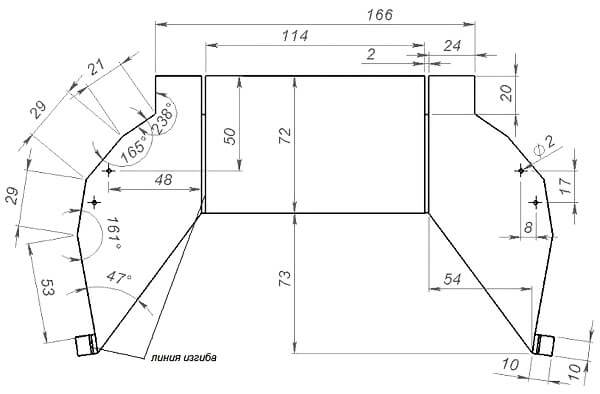
The width of the combine can be wider if necessary.
Nevertheless, it is important to remember that the speed when harvesting lingonberries most often directly correlates with the harm to the plants themselves (especially with a poorly set harvesting technique)
How to use the berry harvester?
The rules for using fruit pickers differ depending on the type of their construction:
The mechanical berry harvester is controlled by a special control panel. The user sets the desired height and turns on the device. The device independently collects the crop, and individual models are also sorted from the trapped garbage.
Handheld devices are just as easy to operate
It is important to conveniently place the device in your hands and move it from bottom to top along the bush. In this way, the loss of leaves and small branches can be minimized.
It is important to empty the filled compartment for fruits in a timely manner, pouring the crop into an empty container.
You just need to turn on the vacuum unit and bring the tube to the berries. Empty the filled compartment with the crop into an empty container, as in the previous version.
Similar designs: rakes, shovels, shovels, combs and others
The principle of "combing" berries from herbaceous bushes is implemented in some devices, either simpler in design, or designed to further simplify the work of the picker.
For example, the simplest options are regular wooden scoops with long teeth on the leading edge:
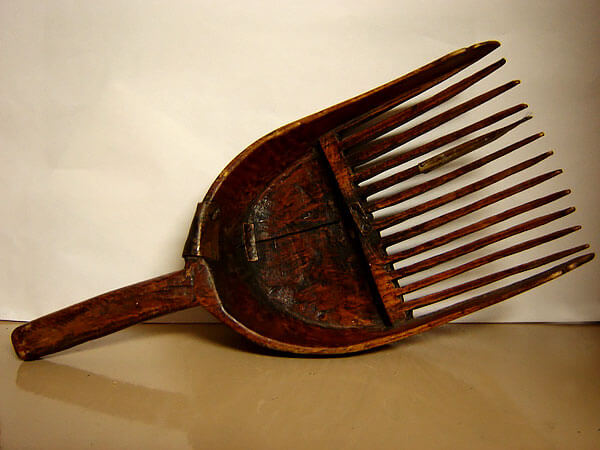
Some of their options are simplified as much as possible:

And in some homemade models, there is an excellent balance between simplicity, cheapness and functionality. For example, here's a harvester:

It is made of wire, thread and bag, while being very compact and not inferior in ease of use to industrial versions.
In these cases, the typical combine design is simplified for the fastest possible production. However, these options have their drawbacks. For example, the scoop has low sides and, if the slope is accidental, the berries fall out of it easily. And wooden buckets get dirty quickly.
In other cases, inventors are working to ensure that the harvester can pick berries without bending over or crawling through the forest on their knees. The simplest option in this case is a special rake:
They can, without bending over, comb the bushes, from time to time pouring the gathered berries into a bucket.
A more difficult option is to combine a rake and a combine. Simply put, a combine with a long handle, which allows you to change the angle of inclination of the bucket itself. The video shows an example of such a device:
And by the way, pay attention: even such complex structures can be made by hand. And with proper manufacturing, the resulting harvester will be no worse than an industrial one.
Therefore, it is worth saying a few words about how to correctly implement the basic principle in such a product.
What devices are there for collecting blueberries
The berry collector is a device that allows you to harvest in large volumes in a short time.The device has different operating techniques, differs in structure, level of mechanization. Here, the main thing is that the blueberry picking machine works efficiently and harms the bushes as little as possible.
Among the variety of fruit pickers available on the market, we can single out a list of models that are distinguished by a long service life, ease of use and additional capabilities.
Combine K-1
This metal device from a domestic manufacturer has proven itself exclusively on the positive side. The device is chosen for the increased level of reliability and durability. It can be used for both blueberries and cranberries. During harvesting, the crop enters the container without any damage, intact and safe.
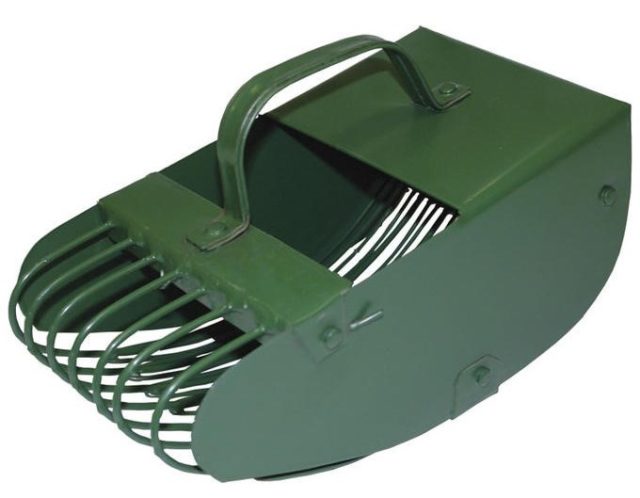
Berry harvesting is quick and easy
bug
This blueberry picker is made of plastic material. It is recommended to use it carefully, otherwise it can be damaged. This device is suitable not only for blueberries, but also for lingonberries, cranberries. The dimensions of the device together with the comb are 13x23x15 cm.

The universal fruit picker harvests crops quickly and efficiently
Harvester Pigasov
This blueberry picker design is very popular with pickers. It is appreciated for its relatively inexpensive cost, versatility (currants, rose hips) and ease of use. The device is made of metal and galvanized wire, which acts as a comb. Such a scoop for collecting blueberries is covered with a completely glossy paint, its weight is only 400 g, and the dimensions are 12 × 24.5 × 8 cm. The distance between the rods in the comb is 5 mm.
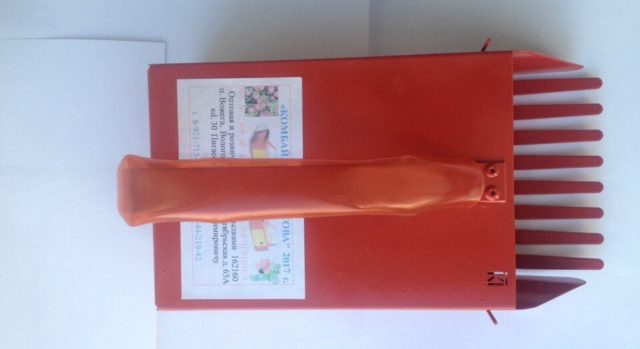
Budget picker with high performance
Plastex
The device does not cause any difficulties during operation. It can be used in conjunction with a telescopic handle, which greatly simplifies the work of picking ripe berries.
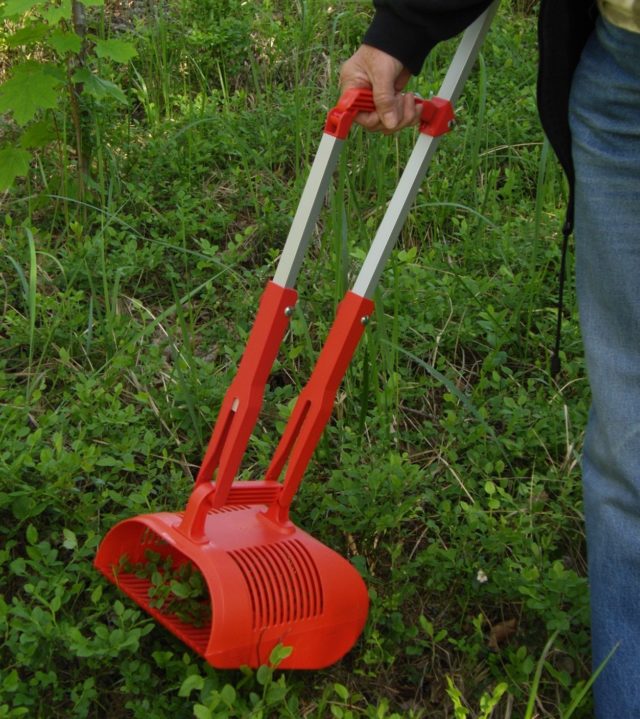
Harvesting is easy and effortless
Alko
The device is equipped with a removable handle and a bag for collecting small berries (cranberries, blueberries, lingonberries, sea buckthorn, currants, gooseberries). The device is made of high quality materials, which explains its long service life. The machine for picking blueberries consists of a handle-holder, a bag and a comb, they are made of plastic and textiles.
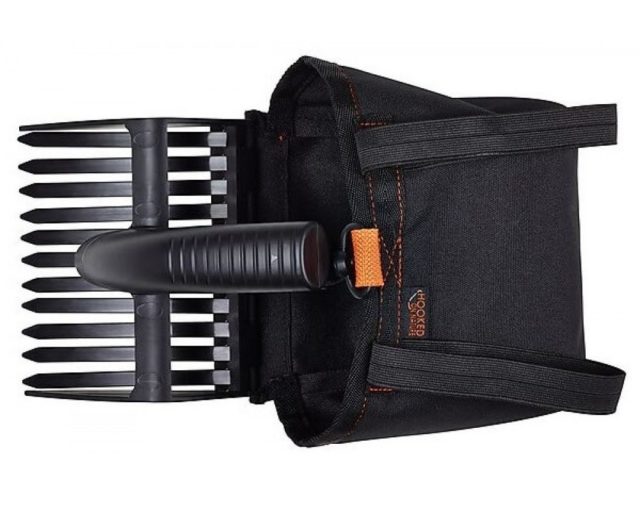
The device is easily attached to a belt or a backpack, has a comfortable handle
How to harvest blueberries with a combine
In order to properly clean the wild bushes, you need to familiarize yourself with the main points: is there a ban on the use of special devices, is there a liability for their use.
Can blueberries be harvested with a combine
It is prohibited to use a blueberry scraper or other suitable device on the territory of the post-Soviet space. Since these devices severely damage the bushes, their branches, and they need a long period to fully recover.
Modern designs have a more gentle mode of operation, and do not injure wild bushes. They are officially allowed in Sweden and Finland. They are also actively used by the Norwegians.
What is the responsibility for the use of combines
On the territory of Ukraine and Belarus, administrative liability is provided for the use of self-made berry pickers. The fine for non-compliance of the device with the law is almost 1900 UAH in Ukraine, 420 rubles in Belarus, and 4000 rubles in Russia. A fruit picker is allowed if it meets certain requirements - there must be a distance of 5 mm between the tines.

